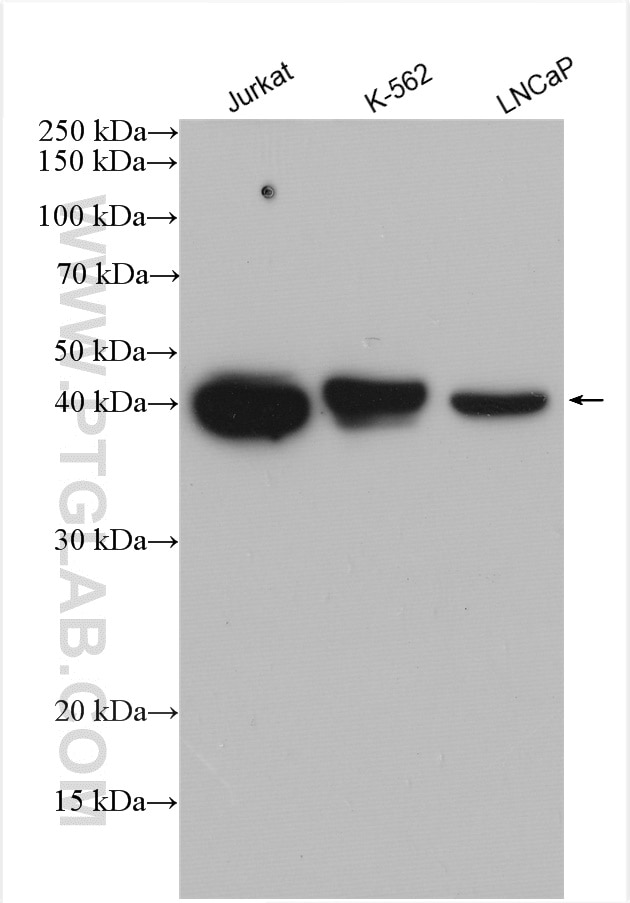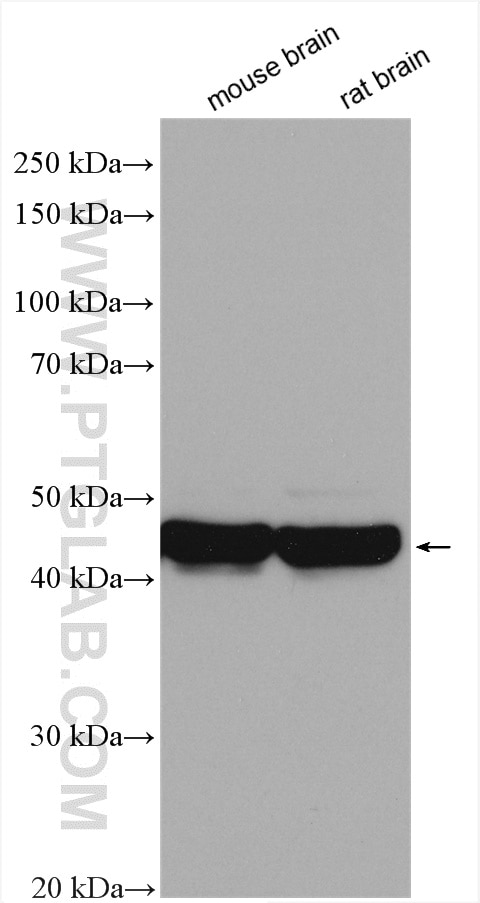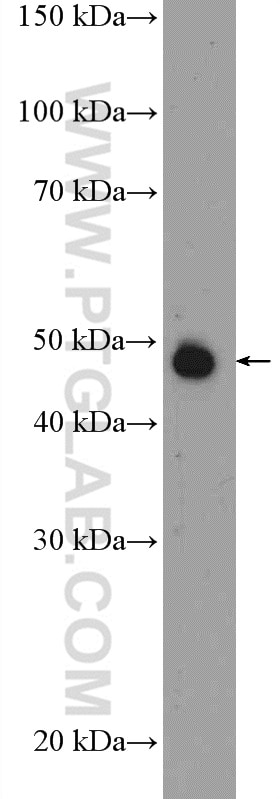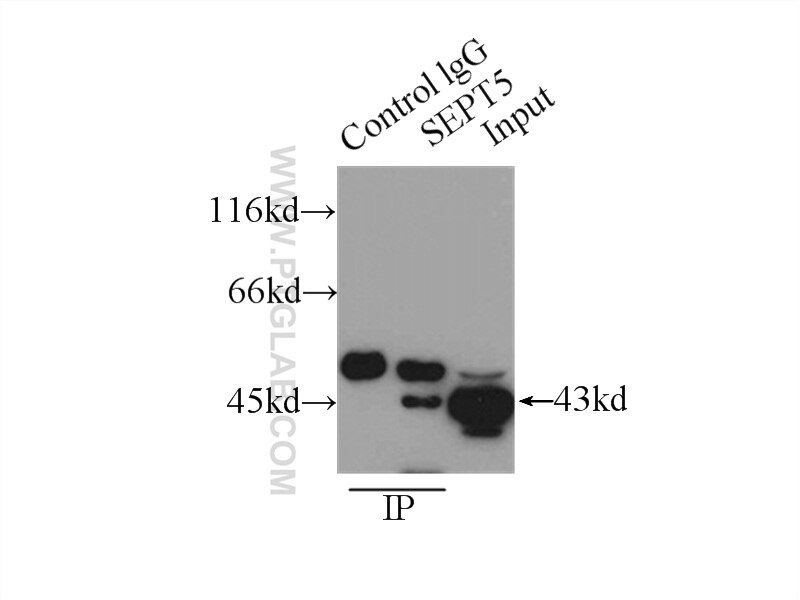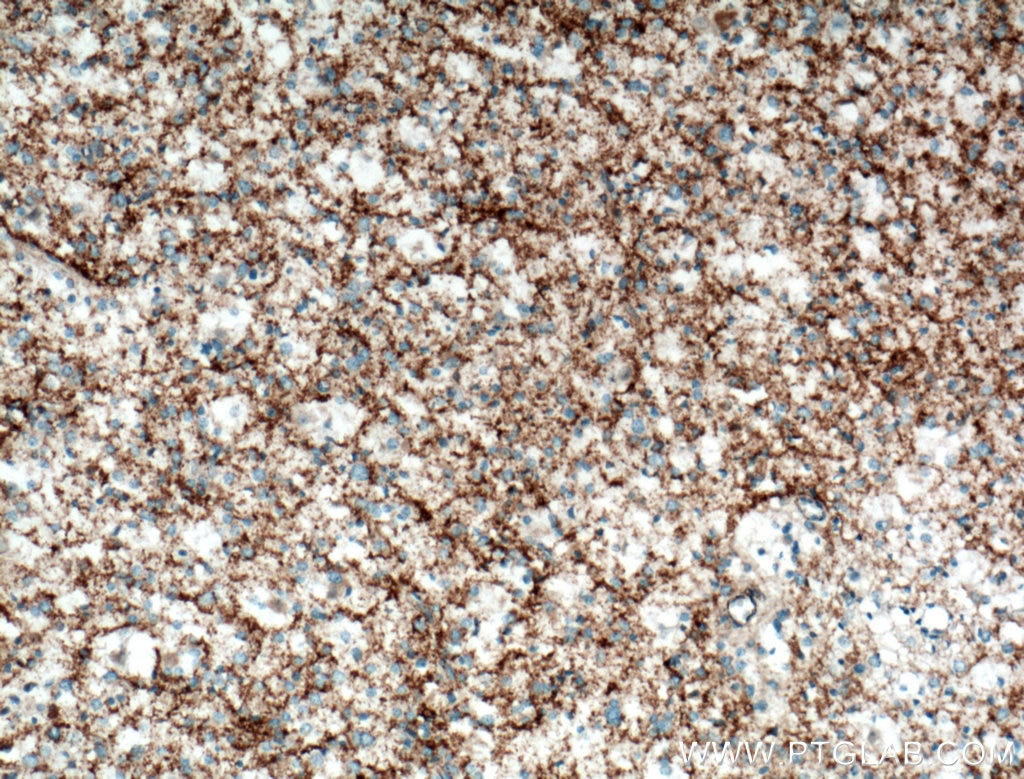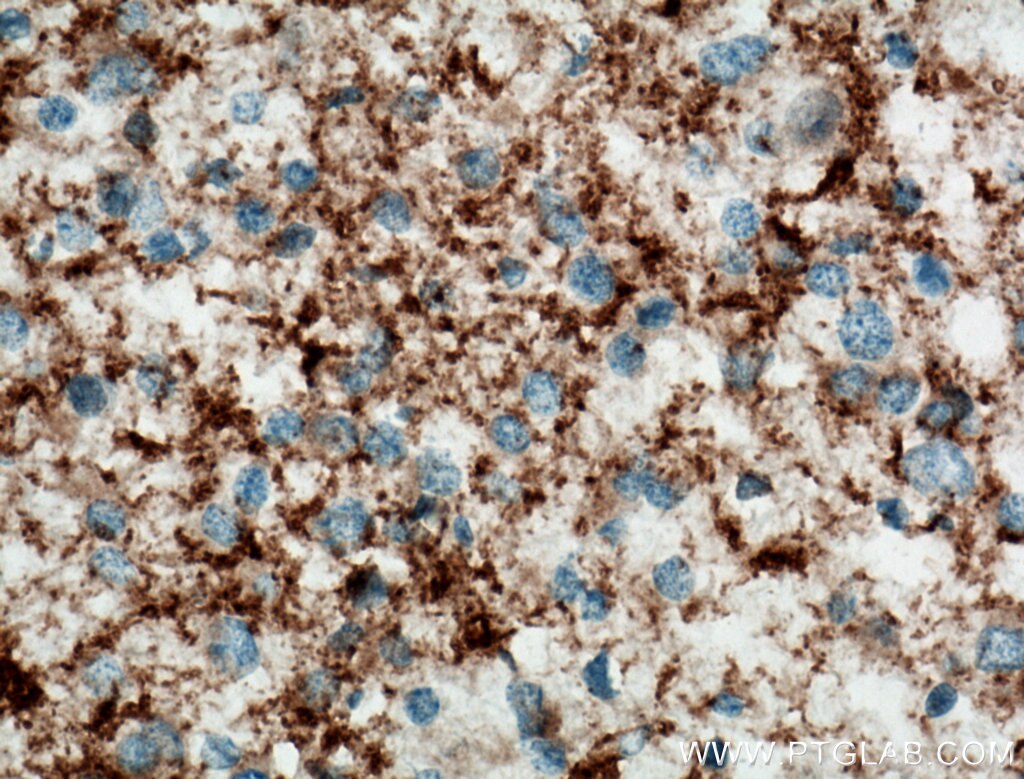Tested Applications
| Positive WB detected in | Jurkat cells, mouse brain tissue, human brain tissue, NIH/3T3 cells, rat brain tissue, K-562 cells, LNCaP cells |
| Positive IP detected in | mouse brain tissue |
| Positive IHC detected in | human gliomas tissue Note: suggested antigen retrieval with TE buffer pH 9.0; (*) Alternatively, antigen retrieval may be performed with citrate buffer pH 6.0 |
Recommended dilution
| Application | Dilution |
|---|---|
| Western Blot (WB) | WB : 1:500-1:2000 |
| Immunoprecipitation (IP) | IP : 0.5-4.0 ug for 1.0-3.0 mg of total protein lysate |
| Immunohistochemistry (IHC) | IHC : 1:50-1:500 |
| It is recommended that this reagent should be titrated in each testing system to obtain optimal results. | |
| Sample-dependent, Check data in validation data gallery. | |
Published Applications
| KD/KO | See 2 publications below |
| WB | See 8 publications below |
| IF | See 3 publications below |
| IP | See 1 publications below |
Product Information
11631-1-AP targets Septin 5 in WB, IHC, IF, IP, ELISA applications and shows reactivity with human, mouse, rat samples.
| Tested Reactivity | human, mouse, rat |
| Cited Reactivity | human, mouse, rat |
| Host / Isotype | Rabbit / IgG |
| Class | Polyclonal |
| Type | Antibody |
| Immunogen | Septin 5 fusion protein Ag2205 Predict reactive species |
| Full Name | septin 5 |
| Calculated Molecular Weight | 369 aa, 43 kDa |
| Observed Molecular Weight | 40-43 kDa |
| GenBank Accession Number | BC025261 |
| Gene Symbol | Septin 5 |
| Gene ID (NCBI) | 5413 |
| RRID | AB_2301692 |
| Conjugate | Unconjugated |
| Form | Liquid |
| Purification Method | Antigen affinity purification |
| UNIPROT ID | Q99719 |
| Storage Buffer | PBS with 0.02% sodium azide and 50% glycerol , pH 7.3 |
| Storage Conditions | Store at -20°C. Stable for one year after shipment. Aliquoting is unnecessary for -20oC storage. 20ul sizes contain 0.1% BSA. |
Background Information
Septin 5, a septin family member formerly called cell division control related protein 1 (CDCrel), is encoded in the 200 kb region and is abundantly expressed in the developing and adult brains of mice and humans. Although its constitutive deletion does not cause detectible structural or developmental abnormalities in the mouse brain, Septin 5 has been implicated in subtle neuronal and behavioral functions. Septin 5 is expressed in presynaptic terminals and exerts negative regulatory control over neurotransmitter release by binding to SNARE-protein, which has been implicated in neuropsychiatric disorders (PMID: 19240081). Septin 5 has 2 isoforms with the molecular mass of 39 and 43 kDa.
Protocols
| Product Specific Protocols | |
|---|---|
| WB protocol for Septin 5 antibody 11631-1-AP | Download protocol |
| IHC protocol for Septin 5 antibody 11631-1-AP | Download protocol |
| IP protocol for Septin 5 antibody 11631-1-AP | Download protocol |
| Standard Protocols | |
|---|---|
| Click here to view our Standard Protocols |
Publications
| Species | Application | Title |
|---|---|---|
J Neurosci Cyclin-dependent kinase 5 phosphorylation of human septin SEPT5 (hCDCrel-1) modulates exocytosis. | ||
Neurobiol Dis S327 phosphorylation of the presynaptic protein SEPTIN5 increases in the early stages of neurofibrillary pathology and alters the functionality of SEPTIN5. | ||
Front Mol Neurosci Integrated proteomics and metabolomics analysis of D-pinitol function during hippocampal damage in streptozocin-induced aging-accelerated mice | ||
Cell Signal SEPT5 overexpression predicts poor prognosis and promotes progression through feedback regulation of HIF-1α in clear cell renal cell carcinoma
| ||
Cells Presynaptic Vesicle Protein SEPTIN5 Regulates the Degradation of APP C-Terminal Fragments and the Levels of Aβ.
| ||
Molecules Synergistic Neuroprotective Effect of Endogenously-Produced Hydroxytyrosol and Synaptic Vesicle Proteins on Pheochromocytoma Cell Line Against Salsolinol. |
